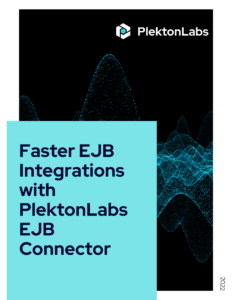Ever wandered into a meeting that was a little too early and sat there, confused by all the jargon? ESB is one of those terms that are thrown around a lot, without much consideration of whether the other person actually has the full scope of its meaning. Instead, folks wonder: what on earth are ESBs?
And even after knowing what an ESB is, you might have trouble figuring out whether you need to use them. Should you select the ESB path or go for the alternatives, like an API? Decisions in technology can be pretty difficult to make and you often wonder if you made the wrong choice. But after giving this a read, you’ll be a little more informed and confident about the stance you want to take.
What Are ESBs?
ESB aka enterprise service bus is essentially a communication system. A service-oriented architecture will have many different software applications that need to interact with each other. An ESB enables this to happen and works as a set of guidelines that enable the integration of various applications in an infrastructure.
In other words, an ESB is the vehicle through which different applications communicate with each other. They work as an interpreter does; so an application will speak to the ESB which then passes on the message to another application, without directly linking them together.
ESBs serve as a solution to the issues that arise from point-to-point integration. These are mainly because this kind of integration tends to become fragile and difficult to maintain over time.
When Should I Opt for ESBs?
You might wonder why you require ESBs to allow programs to communicate. After all, APIs can do the job faster and with an unbelievable amount of agility. However, ESBs provide great value in situations where there are at least a couple of integration points or with a minimum of 3 applications to integrate. They are also useful in scenarios where loose coupling, scalability, and sturdiness are prioritized.
Here are a few things you need to consider when deciding whether an ESB is needed:
The number of applications or services that you need to integrate. A good rule of thumb is to go for point-to-point integration if you are not integrating more than 2 applications.
If you need to integrate over 10 applications, things can get tricky. Chop them into smaller pieces to better scope out how the capabilities would affect other systems. This also makes it easier to identify and rectify any bumps in the capabilities.
It is important to get the lay of the land and understand the layout of your architecture first. Have some kind of immediate as well as an overarching goal in mind so that you know what you want out of an ESB. At the same time, work on the finer details to make sure things like security and integration points are all in order. As always, planning is key to minimizing potential issues and making sure incorporating an ESB into your infrastructure will go off without a major hitch.
Once you’ve thought all these factors through and mulled over the possibilities, you will be able to clearly decide whether ESB is the right for your needs.
ESB Challenges You Might Run Into
Even if you do everything right when implementing ESBs, things can still go wrong. For instance, your ESB can slow things down, instead of speeding them up and hamper productivity. Or, you may not be able to get the ESB up and running in town. Perhaps it cannot access the data or application you need it to. A serious issue arises when you cannot convert into a hybrid; where half your business is cloud-based but your ESB is more old-school.
Whichever one of these problems you face, it is time to get professional help. PlektonLabs can untangle integrated-related knots, and design Mule ESB applications.
Conclusion
At the end of the day, ESB is just one single architecture. Like many other things in tech, it is something people use to achieve their integration needs whether these are simple necessities or range into strategic and complex architectures for integration. At the end of the day, only you can figure out how an ESB will benefit your business or project. And to do that, you have to know the principles behind ESBs and how the communication bus will solve your problems.




